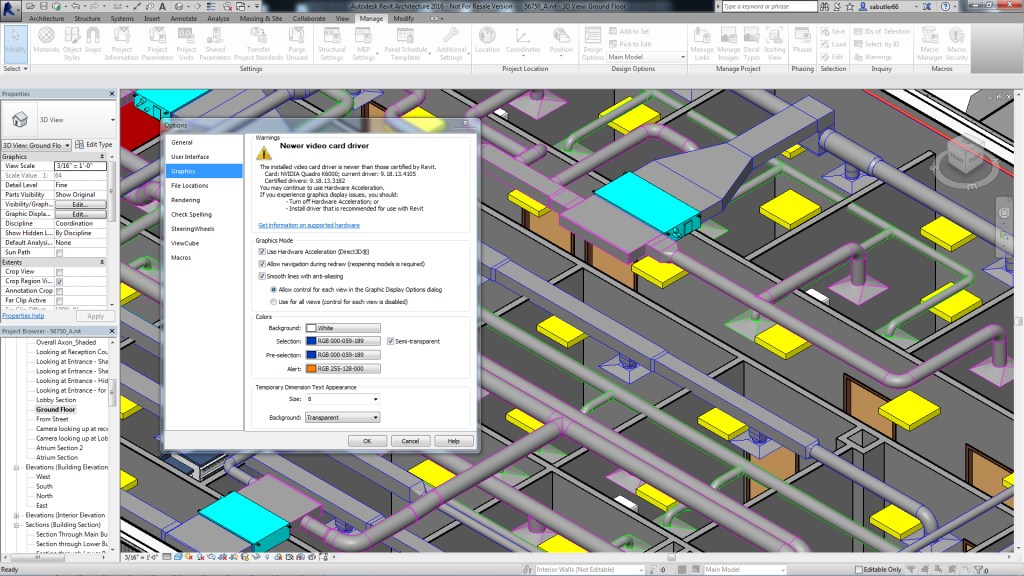Many designers spend more time in
front of their computers than they would prefer. Fortunately, updates to drafting
and building modeling programs are helping reduce the number of hours spent
behind the desk. Autodesk recently released the 2016
Building Design Suite, which includes AutoCAD,
whose highlights ARCHITECT previously covered. This article highlights the
features of two additional programs in the suite: Revit and 3ds Max. Though these releases are incremental
to very mature products, they will help architects increase their
productivity. Disclosure: I am a beta tester for Autodesk Revit.
Determining which features are truly new for Revit is challenging even after reading the list of new features. Maintenance Subscription customers with access to Revit 2015 R2, the mid-year release that shipped last September, may find most of the list familiar. But, overall, Revit 2016 is faster and more stable than ever before, and it does have a few new productivity enhancements. Here are my favorites:
Faster Startup
Oddly, speed is one feature not mentioned in the release’s official
documentation. Revit 2016 opens, refreshes, and saves files significantly
quicker than previous versions.
See What You Want to See
With the program’s improved
navigation in 3D space, Revit users will want to spend less time in plan view.
To inspect a portion of a building model, they can choose the new
Selection Box tool, which will take user-selected model elements and create
a boundary section box in the default 3D view. This is accompanied by the
fulfillment of a longstanding user request, which was added in 2015 R2: the
ability to work in perspective. This capability simply gets better in this
release. Panning, zooming, and orbiting no longer require a full regeneration
of the model during navigation. The program’s fast refresh rate is an
unexpected treat for the experienced user.
The simplicity of the Selection Box tool should also appeal to the casual user who wants to isolate a portion of the model for viewing or detailed modeling quickly. Experienced users may find the more powerful—and free—COINS Auto-Section Box Revit add-in better suited for their needs.
Reduced Picks and Clicks
The Place
Rooms Automatically tool lets users place Revit rooms within all enclosed
areas of a building model with a single click. Pro tip: Run this tool prior to
submitting an energy analysis to the cloud. Energy Model creation accuracy
continues to improve; however, users should still confirm that no glaring
errors were made in the conversion process. Enabling Analysis
Mode for building elements generates a 3D Energy Model view and two schedules
aid in reviewing your work before running the analysis.
Rendering
Autodesk introduced an optional
rendering engine within the Revit environment to better communicate users’ design
intent. The new Autodesk
Raytracer joins three other ways to render in Revit: Nvidia Mental Ray, A360 cloud rendering, and viewport
rendering with the Ray
Trace visual style. The latter needs further development before
it becomes the go-to workflow—rendering with Raytracer on my machine took twice
as long as Mental Ray using the same “best” settings. But the more natural
depiction of sunlight may be worth the extra time. Autodesk likely built Raytracer
to align better with its A360 cloud rendering service, ensuring consistent
results from either.
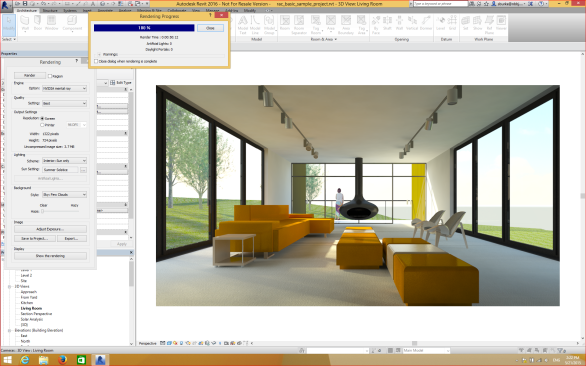
Sean David Burke
Nvidia Mental Ray is one of four rendering engines available in Revit 2016.
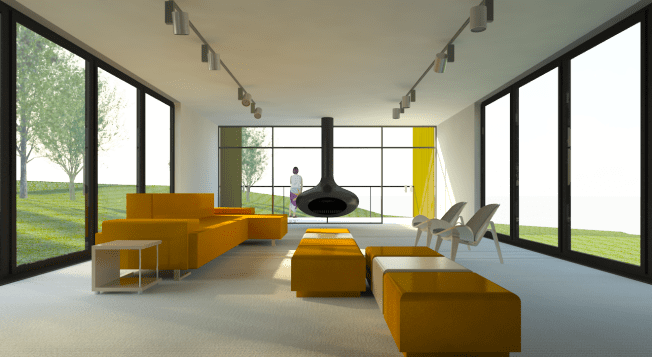
Sean David Burke
Scene rendered in Nvidia Mental Ray.
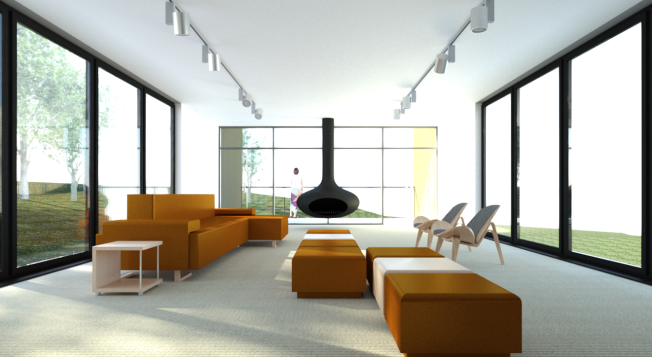
Sean David Burke
Scene rendered with Autodesk Raytracer.
The 3ds Max 2016 release has a better user
interaction experience, rendering engine, tool customization, and
interoperability than its predecessor. Below are other noteworthy updates:
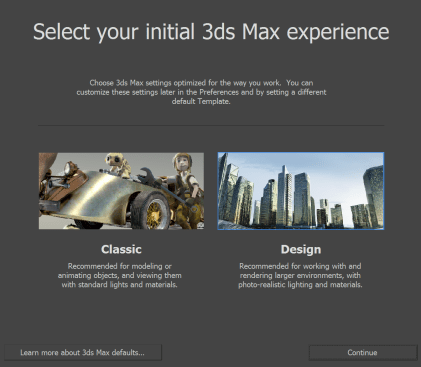
Autodesk
Architects should work in 3ds Max's design environment.
Improved Experience
The software now supports the
multi-touch gestures orbit, pan, and zoom to give users a more natural
interaction with scenes and models than with a standard mouse. This interactivity
may be cause alone for upgrading your next workstation or laptop screen. Touch
navigation can be enabled under Customize
> Preferences > Interaction Mode. Touchscreen accessories from Wacom
and some tablets, such as Microsoft Surface Pro, are compatible.
Upon launching 3ds Max for the
first time, users can choose
either the classic or design environment, based on their field of work. Architects should choose the design
settings, as it will be more familiar to users of the now-defunct 3ds Max
Design and arranges the workspace in a way that’s conducive to architects, designers, and
visualization professionals. (Until last year, 3ds Max and 3ds Max Design were two products. They’re now combined into one.) The program’s tutorials are also much improved,
and the design templates for different environments will help take the
guesswork out of initial scene setup.
Simplified Scripting
Computational design, or
scripting with a visual programming language, is trending at many architecture
firms. For example, Grasshopper
for Rhino and the open-source Dynamo for
Autodesk Revit allow users to create parametric design tools to meet everyday workflow requirements as well as to address project-specific needs.
The new Max Creation Graph (MCG) tool found on the scripting menu in 3ds Max follows this paradigm. By giving users the option of combining just the parameter needs for a particular task in one place using a visual, node-based workflow, the MCG tool allows users to create custom geometry tools and modifiers. Graphs can be packaged and installed as native tools alongside the default tools so they will be available in future 3ds Max sessions. The tool also enables the non-programmer to create and share customizations with colleagues.
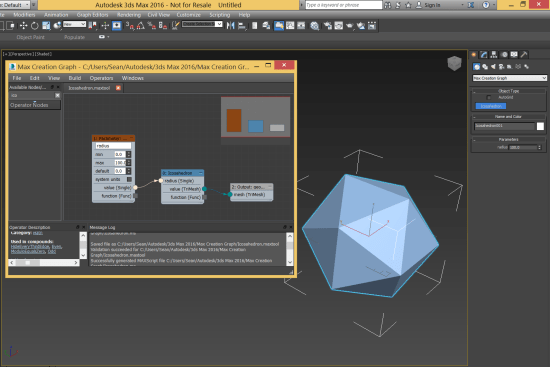
Sean David Burke
Max Creation Graph lets users create custom tools using a node-based workflow.
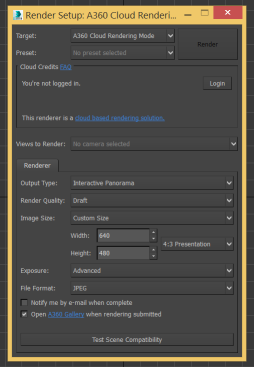
Sean David Burke
Autodesk A360 members can use the cloud to render their models.
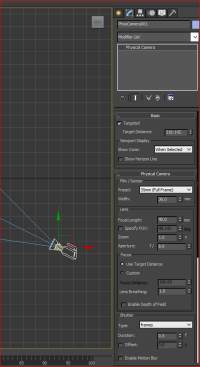
Sean David Burke
3ds Max now has a new Physical Camera tool with the functionality of a real camera.
Streamlined Workflow
Similar to Revit and AutoCAD,
3ds Max now can render in the cloud using the A360 Cloud Rendering
service if users subscribe to one of Autodesk’s plans.
Choosing this option will prompt users to determine the desired image dimensions
and quality. The service will then display the estimated completion time. Users
can continue working while the remote A360 servers do the heavy lifting. When
the rendering is complete, they will receive an email notification. Autodesk worked with Chaos Group, the makers of the popular rendering engine V-Ray, to develop a new Physical Camera tool in 3ds Max that has settings and terminology analogous to a physical camera, giving the user much more control than previously. Users who have used the V-Ray plug-in as their primary rendering engine can switch to the default Mental Ray to take advantage of the cloud rendering capability mentioned earlier.
Linking Revit’s *.rvt files into
3ds Max is now significantly faster—reportedly
as much as 10 times faster. Users can also import Trimble
SketchUp 2015 files without having to save down to an earlier SketchUp
version.
With Autodesk transitioning to new software delivery methods on Jan. 31, 2016, sales of new perpetual licenses for most standalone (non-suite) products will stop. The vendor has a public FAQ document to answer user questions. With the days of skipping the occasional annual software release to save money coming to a close, customers will need to speak up about the value—or lack thereof—provided in new releases.
Autodesk Building Design Suite 2016 pricing options: $2,850 for Annual Subscription; $340 for Monthly Subscription; $6,825 for Perpetual License; $1,025 additional for a Maintenance Subscription.
